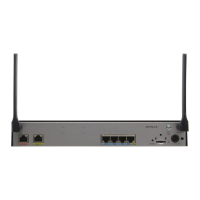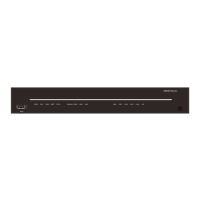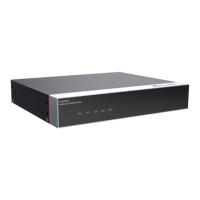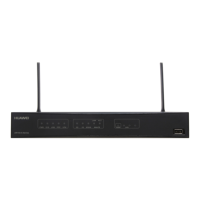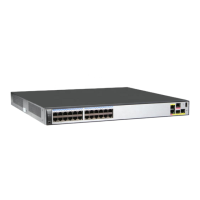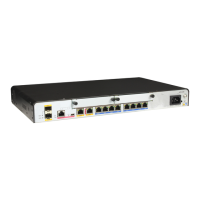– An MST region has only one switching device.
As shown in Figure 8-4, the switching device in B0 is an SST.
l Port roles
Compared with RSTP which defined root ports, designated ports, alternate ports, backup
ports, and edge ports, MSTP has two additional port types: master ports and regional edge
ports.
Table 8-2 lists all port roles in MSTP.
NOTE
Except edge ports, all ports participate in MSTP calculation.
A port can play different roles in different MSTIs.
Table 8-2 Port roles
Port
Roles
Description
Root port A root port is the non-root bridge port closest to the root bridge. Root bridges
do not have root ports.
Root ports are responsible for sending data to root bridges.
As shown in Figure 8-5, S1 is the root; CP1 is the root port on S3; BP1 is
the root port on S2; DP1 is the root port on S4.
Designat
ed port
The designated port on a switching device forwards bridge protocol data
units (BPDUs) to the downstream switching device.
As shown in Figure 8-5, AP2 and AP3 are designated ports on S1; BP2 is
a designated port on S2; CP2 is a designated port on S3.
Alternate
port
l An alternate port is blocked after it receives a BPDU sent by another
switching devices.
l An alternate port provides an alternate path to the root bridge. This path
is different than using the root port.
As shown in Figure 8-5, BP2 and AP4 are alternate ports.
Backup
port
l A backup port is blocked after it receives a BPDU sent by itself.
l A backup port provides a redundant path to a segment and is the backup
for the root port.
As shown in Figure 8-5, CP3 is a backup port.
Master
port
A master port is on the shortest path connecting MST regions to the CIST
root.
BPDUs of an MST region are sent to the CIST root through the master port.
Master ports are special regional edge ports, functioning as root ports on
ISTs or CISTs and master ports in instances.
As shown in Figure 8-5, S1, S2, S3, and S4 form an MST region. AP1 on
S1, being the nearest port in the region to the CIST root, is the master port.
Huawei AR3200 Series Enterprise Routers
Configuration Guide - LAN 8 MSTP Configuration
Issue 02 (2012-03-30) Huawei Proprietary and Confidential
Copyright © Huawei Technologies Co., Ltd.
225

